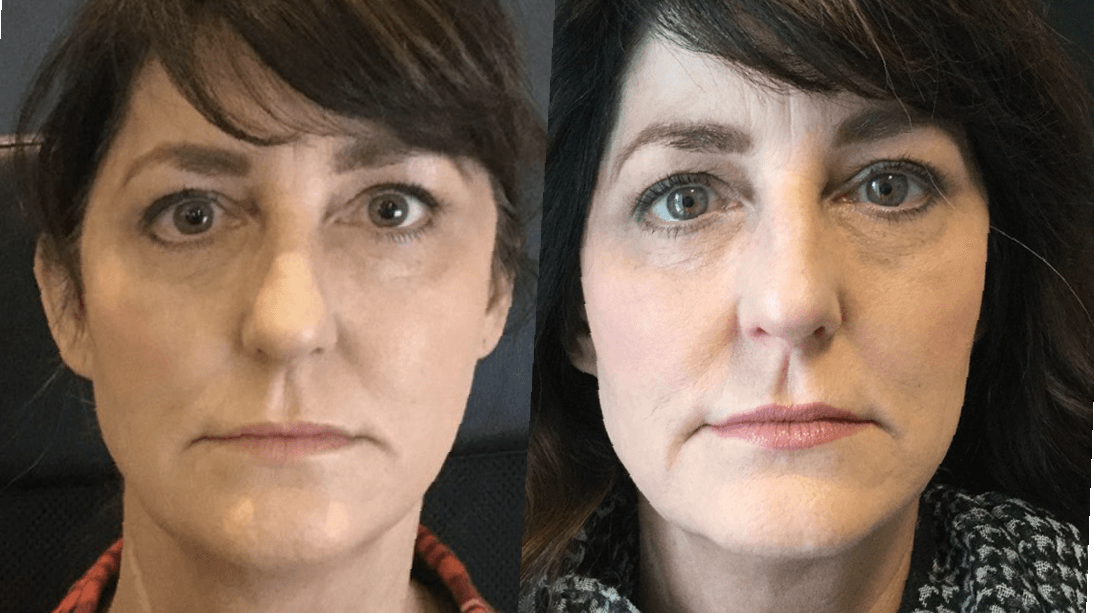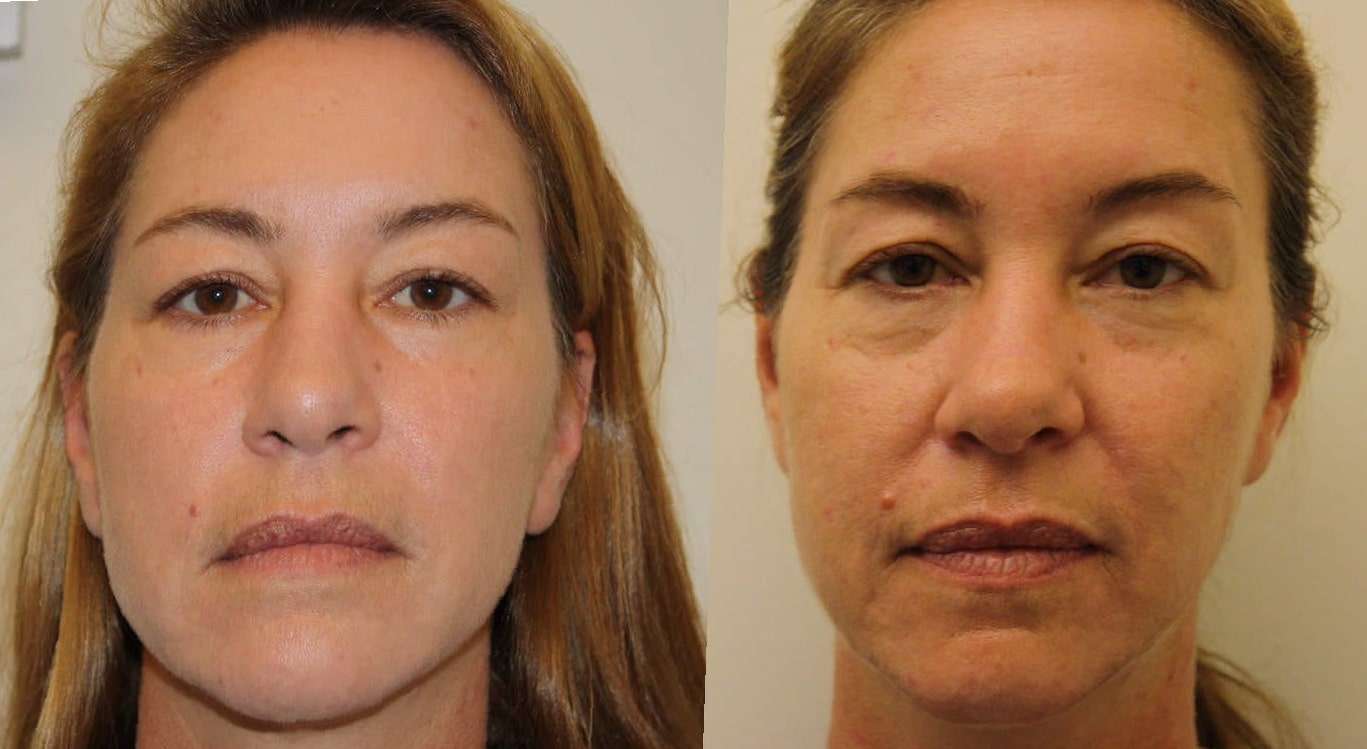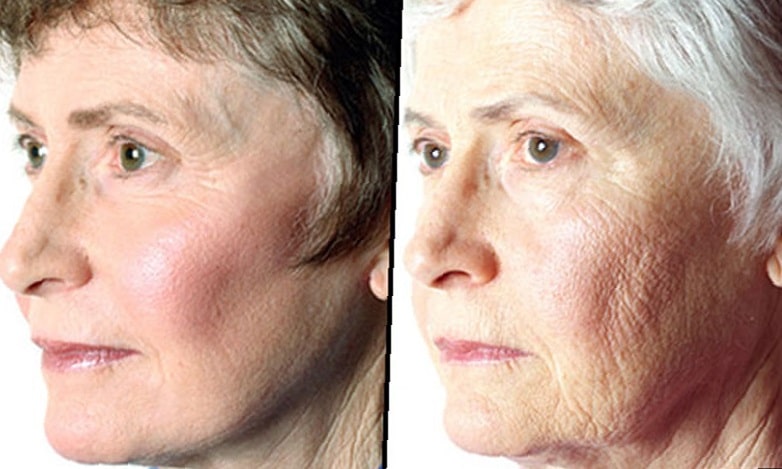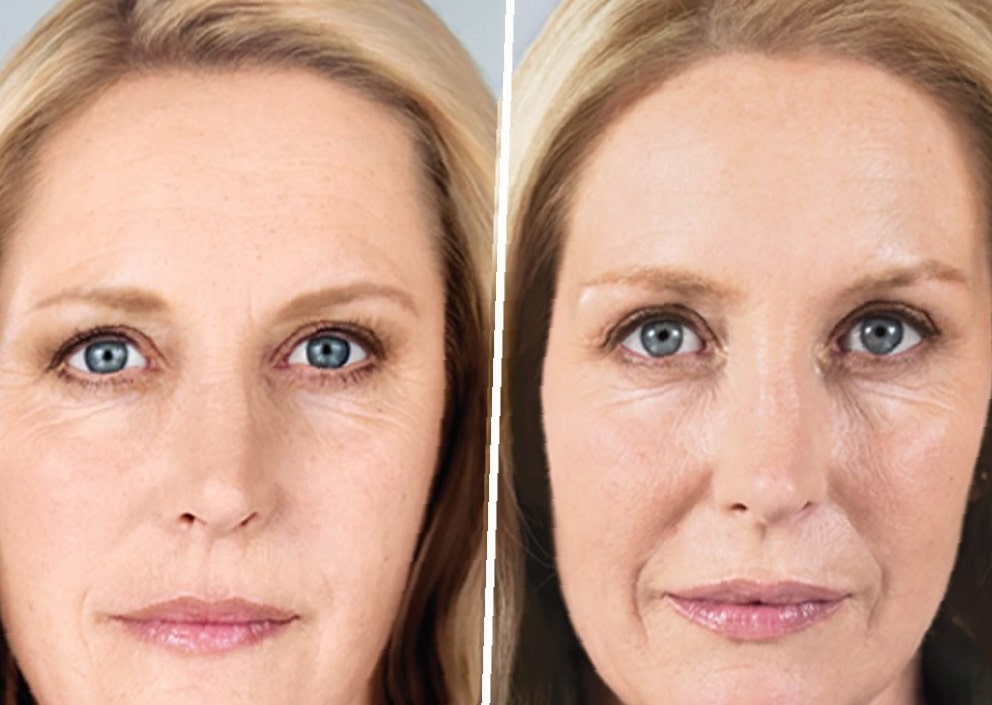Welcome to our blog post on understanding and managing pain during and after PDO thread procedures. If you’re considering this popular beauty treatment or have already booked your appointment, it’s important to have a clear understanding of what to expect in terms of pain and discomfort. In this comprehensive guide, we will delve into the procedure itself, common concerns about pain, effective pain management techniques, the role of anesthesia, factors influencing post-treatment pain levels, the impact of swelling, and how to manage pain during the recovery process. So, keep reading to gain a clearer insight into this revolutionary treatment and ensure a smoother experience.

Understanding Pdo Thread Procedure
PDO thread procedure is a cosmetic treatment that involves the insertion of polydioxanone (PDO) threads into the skin to lift and tighten sagging areas. It is a non-surgical alternative to traditional facelifts and can target various parts of the body, including the face, neck, and body. These threads work by stimulating collagen production, which helps to improve skin elasticity and reduce the signs of aging.
The procedure begins with a thorough consultation with a skilled and experienced dermatologist or cosmetic surgeon. During this consultation, the patient’s goals and expectations are discussed, and the doctor assesses the areas of concern to determine the appropriate thread placement. The procedure is usually performed in an office setting and can take anywhere from 30 minutes to a few hours, depending on the scope of the treatment.
Local anesthesia is typically used to numb the treatment area before the PDO threads are inserted. This helps to minimize any discomfort or pain during the procedure. Once the area is numb, the doctor uses a thin needle or cannula to insert the PDO threads into the skin. The threads are strategically placed to provide lifting and support to the targeted areas. After inserting the threads, the excess ends are trimmed, and the procedure is complete.
After the procedure, patients may experience some mild swelling, bruising, or soreness, which is normal and usually subsides within a few days. It is advised to avoid strenuous activities and heavy lifting for at least a week after the procedure to allow for proper healing. Results from the PDO thread procedure can be seen immediately, but the full effects become more apparent as the collagen production is stimulated and the threads dissolve over time.
Common Concerns About Pdo Thread Pain
When it comes to the common concerns about PDO thread pain, many individuals considering this aesthetic procedure often wonder about the level of discomfort they may experience during and after the treatment. It is important to address these concerns and provide a clear understanding of the pain management techniques and factors that may influence post-PDO thread pain levels.
One of the primary concerns individuals have is the amount of pain they may have to endure during the PDO thread treatment. It is important to note that pain tolerance may vary from person to person. Some individuals may experience minimal discomfort, while others may experience moderate pain during the procedure. However, it is essential to discuss this concern with your physician beforehand to manage your expectations and address any specific concerns you may have.

Another significant aspect to consider is the pain management techniques that can be employed during the PDO thread treatment. Your doctor may use local anesthesia to numb the treatment area, effectively minimizing any potential pain during the procedure. Additionally, they may also offer oral pain medication or recommend over-the-counter pain relievers to manage any discomfort you may feel after the procedure.
- Table: Factors Influencing Post-PDO Thread Pain Levels
| Factor | Impact on Pain Levels |
|---|---|
| PDO Thread Placement | Different areas of the face or body may have varying pain levels |
| Individual Pain Tolerance | Pain perception varies from person to person |
| Thread Type and Size | Thicker or longer threads may cause more discomfort |
| Technique and Expertise | A skilled practitioner can minimize pain and discomfort |
It is essential to understand that post-PDO thread pain levels can vary depending on several factors. These factors include the placement of the PDO threads, an individual’s pain tolerance, the type and size of the threads used, as well as the technique and expertise of the practitioner. Open communication with your doctor regarding your concerns and preferences can help them tailor the treatment plan accordingly.
Lastly, managing pain and discomfort after a PDO thread procedure plays a crucial role in the overall satisfaction and recovery of patients. Your doctor may provide specific aftercare instructions, including guidelines on avoiding certain activities and medications to alleviate pain and reduce swelling. It is essential to follow these instructions diligently for a smooth recovery process and optimal results.
In conclusion, understanding the common concerns about PDO thread pain is crucial for individuals contemplating this aesthetic procedure. Addressing these concerns with your physician, exploring pain management techniques, and considering the factors that influence post-PDO thread pain levels can help alleviate any apprehensions and ensure a more comfortable experience throughout the treatment process.
What To Expect During Pdo Thread Treatment
PDO Thread Treatment:
Are you considering undergoing PDO thread treatment? If so, you may be wondering what to expect during the procedure. PDO (Polydioxanone) thread treatment is a popular non-surgical cosmetic procedure aimed at lifting and tightening the skin. It involves the insertion of dissolvable threads into the underlying tissue, which help stimulate collagen production and provide a lifting effect. Before you undergo this treatment, it’s important to have a thorough understanding of what to expect during the procedure.

Consultation and Preparation:
Prior to undergoing PDO thread treatment, you will need to have a consultation with a qualified aesthetic practitioner. During this consultation, the practitioner will assess your skin and discuss your aesthetic goals. They will explain the treatment process, including its benefits and potential risks. This is also an opportunity for you to ask any questions or express any concerns you may have. Once you and the practitioner have determined that PDO thread treatment is suitable for you, a treatment plan will be developed based on your individual needs.
The Procedure:
PDO thread treatment is usually performed in a clinical setting. The process begins with the application of a topical anesthetic to the treatment area, which helps minimize any potential discomfort. Once the area is numbed, the aesthetic practitioner will make tiny incisions to insert the PDO threads. These threads are carefully placed into the deep layers of the skin and are gently maneuvered to lift and tighten the targeted area. The number of threads inserted will depend on the specific treatment plan.
Duration and Aftercare:
The duration of the PDO thread treatment procedure can vary, depending on the areas being treated and the number of threads being inserted. Most treatments take approximately 30-60 minutes to complete. After the procedure, you may experience some mild discomfort, swelling, or bruising in the treatment area. However, these side effects are temporary and typically resolve within a few days. Your aesthetic practitioner may provide you with post-treatment guidelines, such as avoiding strenuous activities, applying cold compresses, and avoiding certain skincare products, to aid in the healing process.
If you are considering PDO thread treatment, understanding what to expect during the procedure is essential. From the initial consultation to the actual treatment process and aftercare, being well-informed can help you make an informed decision about whether this non-surgical cosmetic procedure is right for you. Remember to consult with a qualified aesthetic practitioner who can provide personalized advice and guidance based on your unique needs and goals.
Effective Pain Management Techniques For Pdo Threads
PDO thread procedures have gained popularity in recent years as a non-surgical solution for skin lifting and rejuvenation. While the treatment offers several benefits, such as minimal downtime and natural-looking results, it is important to understand that some level of pain or discomfort may be experienced during and after the procedure. However, there are various pain management techniques that can be employed to ensure a comfortable experience for patients undergoing PDO thread treatment.
One effective pain management technique is the use of local anesthesia. By injecting anesthetic agents into the treatment area, the sensation of pain can be greatly reduced. This allows the PDO threads to be inserted with minimal discomfort. Local anesthesia is typically applied topically or injected directly into the skin, numbing the area and making the procedure more tolerable for the patient.
Another technique used to manage pain during PDO thread treatment is the application of cold compresses. Cold therapy can help numb the treatment area and reduce any inflammation that may occur. By applying a cold pack or ice pack to the skin before and after the procedure, the patient can experience relief from pain and swelling.

- Using over-the-counter pain medications such as non-steroidal anti-inflammatory drugs (NSAIDs) can also be an effective way to manage pain associated with PDO thread treatment. Medications such as ibuprofen or acetaminophen can help reduce pain and minimize any discomfort experienced during and after the procedure. It is important for patients to consult with their healthcare provider before taking any medication to ensure its safety and efficacy for their specific case.
| Technique | Description |
|---|---|
| Local anesthesia | The use of anesthetic agents to numb the treatment area and minimize pain during the procedure. |
| Cold compresses | Application of cold packs or ice packs to reduce pain and swelling before and after the procedure. |
| Over-the-counter pain medications | Using NSAIDs or analgesics to manage pain and discomfort associated with PDO thread treatment. |
It is important for patients to discuss their pain management preferences with the healthcare provider prior to the PDO thread procedure. Each individual may have different pain tolerance levels and may require specific pain management techniques tailored to their needs. By effectively managing pain during and after the treatment, patients can have a more comfortable experience and achieve optimal results.
The Role Of Anesthesia In Minimizing Discomfort
When it comes to the PDO thread procedure, one common concern that patients often have is the level of pain they may experience during and after the treatment. It’s only natural to be curious about what to expect, especially if you’re undergoing a procedure that involves needles and threads to lift and tighten your skin. However, it’s important to note that the use of anesthesia plays a significant role in minimizing discomfort during the PDO thread treatment.
Firstly, anesthesia is administered before the procedure to ensure that the patient remains comfortable and pain-free throughout. Depending on the individual’s tolerance and the complexity of the treatment, various forms of anesthesia can be used, such as local anesthesia, nerve blocks, or even conscious sedation. These options help to numb the treatment area and provide relief from any potential pain caused by the insertion of the PDO threads.
Secondly, the use of anesthesia during the PDO thread procedure also contributes to minimizing post-procedural discomfort. By numbing the area, patients are less likely to experience significant pain or soreness once the anesthesia wears off. This can be particularly comforting for those who may feel anxious or concerned about potential pain during the recovery period.
Factors Influencing Post-Pdo Thread Pain Levels
The post Procedural Swelling And Its Impact On Pain in PDO thread treatment plays a crucial role in determining the overall experience of the patients. Understanding the various factors that can influence post-PDO thread pain levels is essential for both patients and medical professionals involved in this procedure. By identifying and managing these factors effectively, it is possible to minimize discomfort and promote a more positive recovery.
One of the primary factors that can significantly impact post-PDO thread pain levels is the extent of swelling experienced after the procedure. Swelling is a normal response of the body to injury or trauma, and it plays a crucial role in the healing process. However, excessive swelling can lead to increased pain and discomfort for patients. Proper management of swelling through appropriate post-treatment care, such as applying cold compresses and keeping the head elevated, can help minimize pain levels and promote faster recovery.
Another factor that influences post-PDO thread pain levels is individual pain tolerance. Each person’s pain threshold varies, and some individuals may naturally have a higher tolerance for pain than others. Factors such as genetics, age, and previous experiences with pain can all contribute to differences in pain perception. By understanding their own pain tolerance and communicating it with their medical professionals, patients can work together to develop appropriate pain management strategies tailored to their specific needs.
- Proper management of swelling through appropriate post-treatment care
- Individual pain tolerance and communication with medical professionals
- The level of surgical expertise of the medical professional carrying out the PDO thread procedure
| Factors Influencing Post-PDO Thread Pain Levels | Impact |
|---|---|
| Extent of swelling | Can lead to increased pain and discomfort if excessive |
| Individual pain tolerance | Varies from person to person, affects pain perception |
| Surgical expertise | High level of expertise can minimize pain and discomfort |
The level of surgical expertise of the medical professional carrying out the PDO thread procedure is also an important factor in post-PDO thread pain levels. A highly skilled and experienced professional will perform the procedure with precision and minimize tissue trauma, resulting in reduced pain and discomfort for the patient. On the other hand, a less skilled practitioner may inadvertently cause more tissue damage, leading to increased pain levels. It is crucial for patients to choose a reputable and qualified medical professional to perform the procedure to ensure the best possible outcome.

In conclusion, several factors can influence post-PDO thread pain levels. Managing swelling through appropriate care, understanding individual pain tolerance, and selecting a skilled medical professional are all crucial in minimizing discomfort and promoting a smoother recovery. By taking these factors into consideration, patients can enhance their overall experience and achieve better pain management outcomes.
Examining Pain Levels In The Aftermath Of Pdo Thread Treatment
Pain is a common concern for many individuals considering PDO thread treatment. It is important to understand the various factors influencing pain levels after the procedure and how to effectively manage any discomfort that may arise.
One factor that can impact pain levels is the individual’s pain tolerance. Some individuals naturally have a higher pain threshold than others and may experience less discomfort during and after the PDO thread treatment. Additionally, the type and location of the threads used can also affect pain levels. Thinner threads or those placed in more sensitive areas may result in increased pain.
Another significant factor is the skill and experience of the practitioner performing the PDO thread treatment. A skilled practitioner who is experienced in the procedure will ensure that the threads are placed correctly and with minimal trauma to the surrounding tissues, thus reducing the likelihood of post-treatment pain.
- Furthermore, the extent of the PDO thread treatment can influence pain levels. A more extensive treatment involving a larger area or a greater number of threads may result in higher levels of pain compared to a more conservative treatment.
| Factors Influencing Pain Levels |
|---|
| Type and location of threads |
| Practitioner’s skill and experience |
| Extent of the treatment |
It is crucial for individuals undergoing PDO thread treatment to communicate their pain levels and discomfort to their practitioner. This allows the practitioner to adjust pain management techniques accordingly. Techniques such as the use of topical or local anesthetic can be employed to minimize discomfort during the procedure.
After the PDO thread treatment, it is normal to experience some level of pain, swelling, and bruising. However, the severity of these side effects can vary from person to person. Proper post-procedural care and pain management can help minimize these effects and promote a smoother recovery process.
Managing pain and discomfort after PDO thread treatment often involves over-the-counter pain medications or prescribed analgesics. Applying cold compresses to the treated areas can also help reduce swelling and alleviate pain. It is important to follow the post-treatment instructions provided by the practitioner and avoid any activities or habits that may worsen pain levels.

In conclusion, examining pain levels in the aftermath of PDO thread treatment is crucial for both practitioners and individuals seeking this cosmetic procedure. Understanding the factors influencing pain levels and implementing effective pain management techniques can contribute to a more positive treatment experience and successful recovery.
Post-Procedural Swelling And Its Impact On Pain
The topic of post-procedural swelling and its impact on pain is an important aspect to consider when undergoing a PDO thread procedure. Swelling is a natural response of the body to any form of trauma, including invasive cosmetic procedures. PDO thread treatment, which involves inserting absorbable sutures into the skin to lift and tighten sagging areas, can result in swelling as part of the body’s healing process.
Swelling after a PDO thread procedure can vary from person to person. Some individuals may experience minimal swelling, while others may have more pronounced swelling in the treated area. The extent of swelling can be influenced by various factors, such as the number of threads used, the depth of insertion, and the individual’s unique healing response.
In some cases, post-procedural swelling may also contribute to pain or discomfort. The swelling can place pressure on surrounding tissues and nerves, leading to sensations of tightness, soreness, or tenderness. It’s important to note that the level of pain experienced can also vary among individuals. While some may only feel mild discomfort, others may have more significant pain that requires additional pain management techniques.
- It is crucial to manage post-procedural swelling effectively to minimize its impact on pain. There are several strategies that can be employed to reduce swelling and promote healing. Firstly, applying ice packs or cold compresses to the treated area can help constrict blood vessels and reduce inflammation. Make sure to wrap the ice pack in a cloth or towel to prevent direct contact with the skin.
- Elevating the treated area can also aid in reducing swelling. By keeping the area elevated above heart level, it helps to facilitate proper lymphatic drainage and decrease fluid accumulation. This can be achieved by using pillows or cushions to prop up the affected area while resting or sleeping.
- Additionally, following the post-procedure instructions provided by your healthcare professional is crucial for managing swelling. This may include avoiding vigorous physical activity, refraining from touching or rubbing the treated area, and taking prescribed medications to alleviate pain and reduce inflammation.

| Post-Procedural Swelling | Impacts on Pain |
|---|---|
| Varies from person to person | Can contribute to sensations of tightness and soreness |
| Affected by factors such as number of threads used and depth of insertion | Level of pain experienced can vary among individuals |
| Managing swelling | Strategies include applying ice packs, elevating the treated area, and following post-procedure instructions |
Managing Pain And Discomfort After Pdo Thread Procedure
After undergoing a PDO thread procedure, it is common to experience pain and discomfort. Managing this post-procedural pain is crucial for a smooth recovery and successful results. By following proper pain management techniques, you can alleviate discomfort and promote healing.
One of the most effective techniques for managing pain after a PDO thread procedure is through medication. Your doctor may prescribe painkillers or recommend over-the-counter pain relievers, such as acetaminophen or ibuprofen. It is important to take the medication as directed and not exceed the recommended dosage. These medications can help reduce pain and inflammation, allowing you to feel more comfortable during the recovery process.
In addition to medication, there are other strategies that can help manage pain and discomfort after a PDO thread procedure. Applying ice packs to the treated area can help reduce swelling and numb the area, providing temporary relief. It is important to wrap the ice pack in a cloth or towel to prevent direct contact with the skin and avoid potential skin damage. The cold temperature can help constrict blood vessels, reducing inflammation and pain.
Furthermore, it is crucial to avoid any strenuous activities or excessive movement that may aggravate the treated area. Give your body time to heal and avoid any activities that may strain the threads or cause unnecessary pain. It is recommended to take it easy and rest during the initial days following the procedure to allow the thread to settle properly and minimize discomfort.
- Take painkillers or recommended medication as directed.
- Apply ice packs wrapped in a cloth to reduce swelling and numb the area.
- Avoid strenuous activities and excessive movement to prevent additional pain.
Each individual’s pain tolerance and recovery process may vary, so it is important to follow your doctor’s instructions and communicate any concerns or questions you may have. They can provide specific guidance tailored to your situation and monitor your progress to ensure a smooth recovery. By managing pain and discomfort effectively, you can enhance your overall experience with a PDO thread procedure and achieve desired results.
| Management Techniques | Benefits |
|---|---|
| Taking painkillers | Reduces pain and inflammation |
| Applying ice packs | Reduces swelling and provides temporary relief |
| Avoiding strenuous activities | Allows proper healing and minimizes discomfort |
Recovery Timeline: Pain Reduction Progression
In the journey of undergoing a Pdo Thread Procedure, understanding the recovery timeline is crucial for patients. One of the primary concerns during the recovery process is pain management and the progression of pain reduction. Patients often wonder how long it will take for their discomfort to diminish and their pain to subside. In this blog post, we will delve deeper into the recovery timeline and discuss the various stages of pain reduction progression.
Before we delve into the recovery timeline, it is essential to understand that pain levels can vary from person to person. Each individual may experience pain differently, depending on factors such as their pain threshold, the complexity of the procedure, and their body’s healing process. Therefore, it is crucial to consult with your healthcare provider to get a personalized understanding of your recovery journey.
During the initial stages of the recovery timeline, it is normal to experience some level of discomfort and pain. The body needs time to heal and adjust to the presence of the Pdo threads. This stage is often characterized by mild to moderate pain, which can be managed with over-the-counter pain medications recommended by your healthcare provider. It is essential to follow the prescribed pain management techniques to ensure a smooth progression towards pain reduction.
- During the next phase of the recovery timeline, patients may start to notice a gradual decrease in pain intensity. The body begins to adapt to the threads, and the tissues surrounding the threads start to heal. This stage involves a significant reduction in pain and discomfort, allowing patients to resume their daily activities with minimal hindrance.
- As the recovery timeline progresses, the pain further subsides, and patients experience a considerable improvement in their overall well-being. At this stage, most patients report minimal to no pain, and any discomfort that may persist is usually well-managed with simple pain relief measures.
- Finally, towards the end of the recovery timeline, patients generally reach a point where they experience minimal pain, if any. The body has fully adapted to the presence of the Pdo threads, and the tissues have healed. Patients can enjoy the long-term benefits of the procedure without any significant discomfort.
It is important to note that while the recovery timeline provides a general progression of pain reduction, individual experiences may vary. Factors such as the number of threads inserted, the location of the treatment area, and an individual’s healing capacity can influence the duration of the recovery period. Therefore, it is crucial to follow post-procedure care instructions provided by your healthcare provider for optimal pain management and recovery.

In conclusion, understanding the recovery timeline and pain reduction progression is essential for patients undergoing a Pdo Thread Procedure. It allows individuals to have realistic expectations regarding the duration and intensity of pain during the recovery phase. By following the prescribed pain management techniques and closely monitoring their healing progress, patients can ensure a smooth and successful recovery.
| Benefits of Understanding the Recovery Timeline |
|---|
| 1. Enhanced Patient Experience: Having a clear understanding of the recovery timeline helps patients manage their expectations and reduces anxiety during the healing process. |
| 2. Improved Pain Management: With knowledge of the pain reduction progression, patients can adopt effective pain management techniques and ensure a more comfortable recovery. |
| 3. Realistic Recovery Expectations: By knowing what to expect at each stage, patients can plan their daily activities accordingly and make any necessary adjustments to their routine. |
Frequently Asked Questions
Q1: What is the procedure for Pdo Thread treatment?
The Pdo Thread procedure involves inserting threads made of a dissolvable material into the skin to lift and tighten sagging areas of the face or body.
Q2: Are Pdo Thread treatments painful?
Pain levels vary from person to person, but most patients report feeling minimal discomfort during the procedure.
Q3: What can I expect during a Pdo Thread treatment?
During the treatment, the doctor will numb the treatment area with a local anesthetic. Then, small incisions will be made, and the threads will be carefully inserted into the skin.
Q4: What are some effective pain management techniques for Pdo Threads?
To manage pain during and after the procedure, doctors may use a combination of local anesthesia, numbing creams, cold compresses, and over-the-counter pain medications.
Q5: How does anesthesia help minimize discomfort during Pdo Thread treatment?
Anesthesia is used to numb the treatment area, ensuring that patients do not feel pain during the insertion of the threads. This helps minimize discomfort and ensures a more comfortable experience.
Q6: What factors can influence post-Pdo Thread pain levels?
Factors such as individual pain tolerance, the extent of the treatment, the number of threads used, and the location of the treatment area can all impact post-treatment pain levels.
Q7: How does post-procedural swelling impact pain after Pdo Thread treatment?
Post-procedural swelling is a common side effect of Pdo Thread treatments and can contribute to discomfort and pain. However, swelling can be managed with cold compresses and anti-inflammatory medications.

Comments are closed.